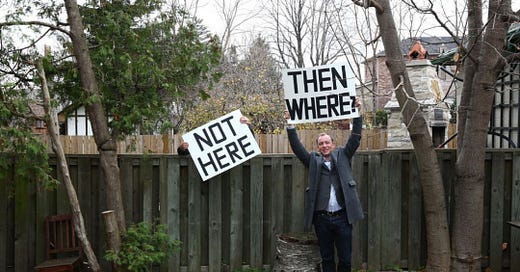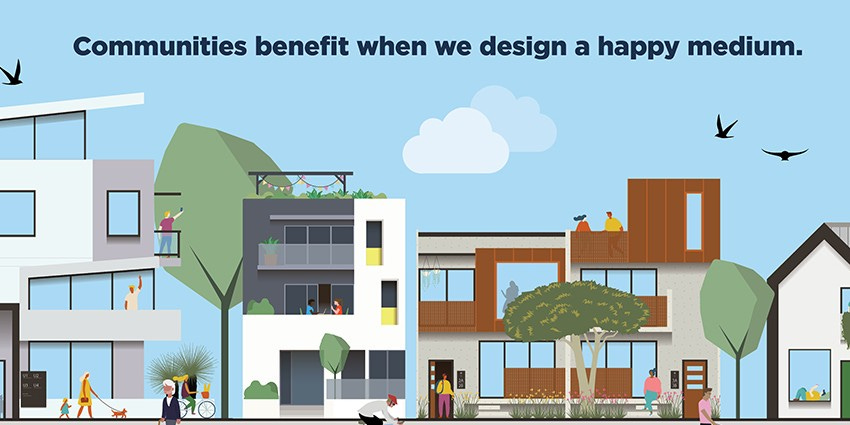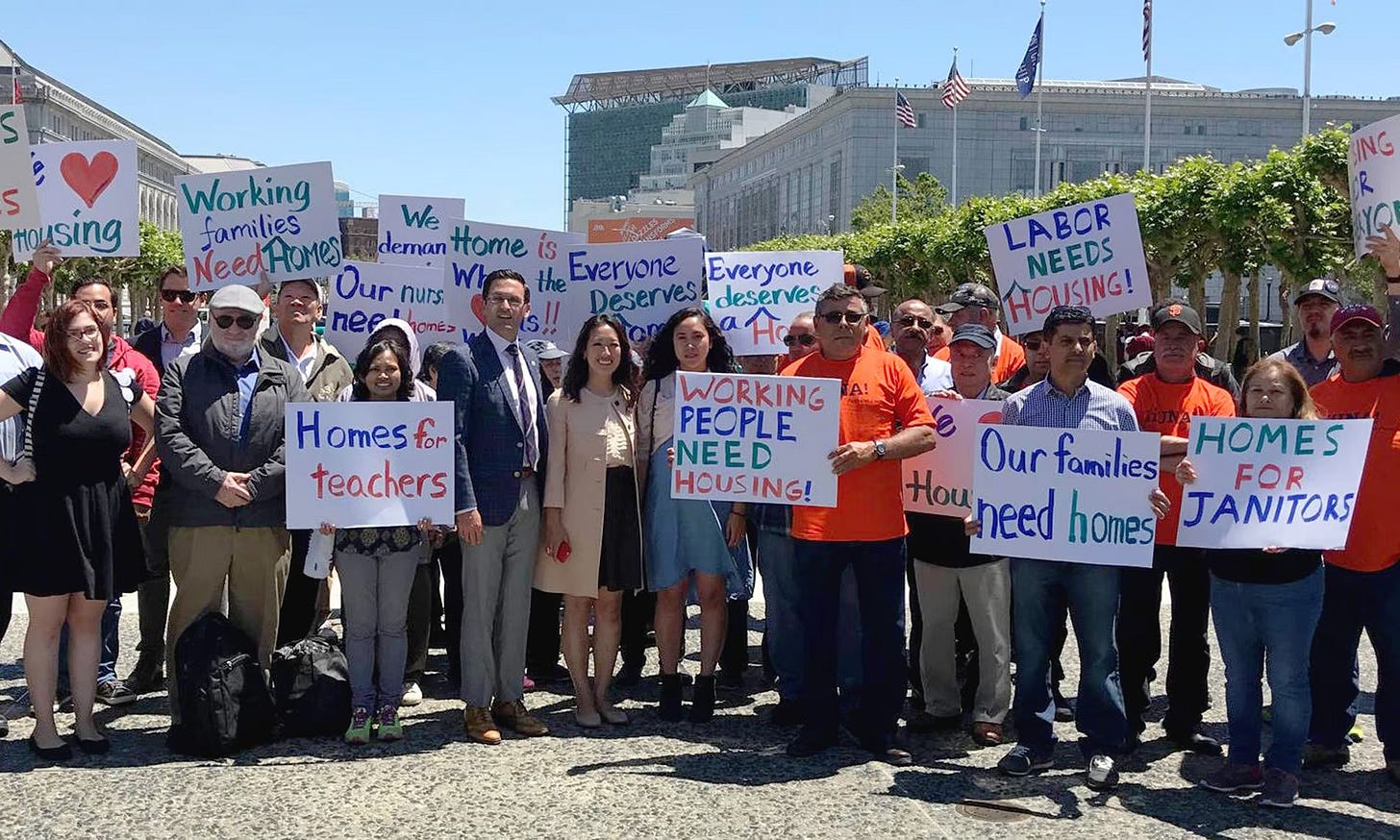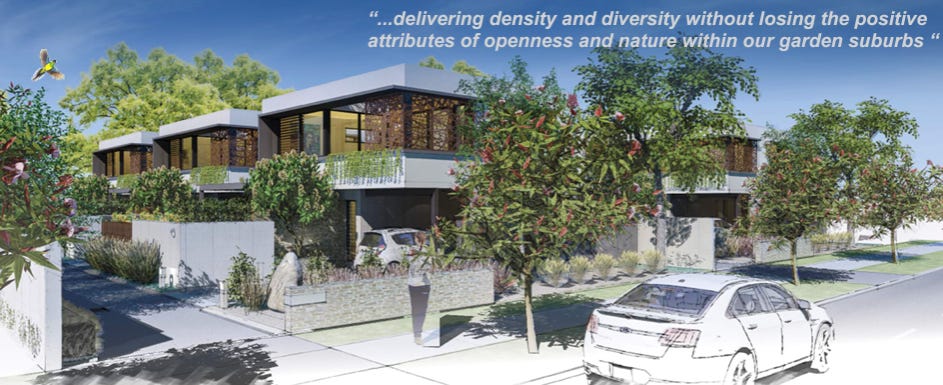Seeking the happy medium
NIMBYism is stifling the diversity and affordability provided by medium density housing
In my previous article, I talked about the need of medium-density housing and some of its advantages. The term refers to medium-density housing options such as townhouses, duplexes, and low-rise apartments that could provide a much-needed solution to growing urban populations. These types of housing are key to addressing Brisbane’s escalating housing crisis, with skyrocketing prices, a shortage of affordable homes, and an ever-widening gap in the housing market. However, there's one major roadblock that continues to stifle progress: NIMBYism (Not In My Backyard).
Source: Planning at the Coal Face by Steve Hesmondhalgh
What is NIMBYism?
NIMBYism occurs when residents, often those in affluent or established single-family home neighbourhoods, oppose new development or changes in land use near their homes. Their resistance is sometimes based on concerns about traffic, noise, and changes to the character of the area, but it can also stem from more implicit biases, including classism or a resistance to diversity in the form of different housing types.
While some concerns are valid, they often overlook the broader societal benefits of medium-density housing. In many cases NIMBYism perpetuates inequality by making it harder to build affordable housing or increase density in areas that need it most and in areas where it would work best (ie places with good public transport). In Brisbane, NIMBYism is blocking essential development that could help alleviate the housing crisis and create a more equitable, sustainable urban environment.
How NIMBYism blocks Brisbane’s density growth
Brisbane has a vast suburban sprawl, much of it dominated by low-density, single-family homes. These sprawling neighbourhoods are not only inefficient in terms of land use, but they also contribute to increased traffic congestion, a lack of public transport options, and growing environmental concerns. To address these issues, urban planners favour medium-density housing developments, which could accommodate more people in the same amount of space, reduce the demand for new infrastructure, provide more affordable housing options and reduce land clearing.
However, whenever new projects are proposed to increase density, particularly in wealthier suburbs, NIMBYism rears its head. Some of the arguments include:
Traffic congestion: Residents argue that more homes in their neighbourhood will increase traffic, even though increased density when done well will encourage better public transport and reduce car dependency.
Neighbourhood character: Some fear that townhouses or low-rise apartments will change the “character” of their neighbourhood, which often means they fear an influx of younger, more diverse, or lower-income residents.
Aesthetic concerns: There's also a tendency to claim that medium-density housing doesn’t fit the aesthetic of existing communities, despite modern architecture offering a range of visually appealing designs.
These objections tend to disproportionately come from privileged homeowners living in single-family dwellings, who assume their way of life is superior and that no one would truly "want" to live in townhouses or apartments. This line of thinking reflects a narrow view of housing needs and ignores the fact that many people actively prefer more affordable, low-maintenance living arrangements that medium-density housing provides.
Source: WA Government Medium density planning guide
The privilege of NIMBYism: who gets to decide?
At its core, NIMBYism is often a defence of privilege. Homeowners in established neighbourhoods—many of whom are in the older generations and bought their homes when prices were more affordable —use their political and social clout to block developments that would open the door to more affordable housing options which are very much needed by their children’s and grandchildren’s generations. In doing so, they contribute to a vicious cycle: housing prices soar as demand outstrips supply, leaving younger generations and lower-income families unable to buy or even rent homes in areas with good access to jobs, schools, public transport and other services. This in term leads to the NIMBY paradox when residents oppose changes that could increase housing in their suburbs but complain when workers are priced out of an area and their local café can’t get enough service staff, so they have a longer wait for their coffee.
Source: Planning at the Coal Face by Steve Hesmondhalgh
Those who resist density frequently argue that medium-density housing won’t "fit" in their neighbourhood, but that assumption is deeply flawed. It suggests that they, as homeowners, know what is best for everyone else in the community, even if that means limiting housing options for others. This mentality ignores the realities faced by thousands of Brisbane residents, particularly younger people, single-income households, and first-home buyers who are priced out of the traditional single-family home market.
The notion that people wouldn't "want" to live in townhouses or medium-density developments is simply untrue. Many prefer the convenience of being closer to city centres, having smaller spaces to maintain, and living in vibrant, walkable communities. Townhouses and duplexes provide a bridge between the sprawl of suburbia and the high-density developments of inner cities, creating diverse, multi-generational communities that cater to different lifestyle choices.
Addressing the missing middle
The missing middle of housing is a critical gap that must be addressed for Brisbane to solve the housing crisis. By allowing for more medium-density development, we can offer a range of housing options to meet the diverse needs of the population—whether it's young professionals looking for homes near the city or older couples downsizing as they enter retirement. This doesn’t mean getting rid of detached housing all together. It is about creating more diversity and a better balance of different types of housing.
Cities around the world have shown that increasing density doesn’t have to mean sacrificing community spirit or quality of life. Thoughtful urban design can integrate townhouses and low-rise apartments into existing neighbourhoods in ways that enhance the area rather than detract from it. In fact, denser, more walkable neighbourhoods often lead to stronger local economies, better public transport, and a higher quality of life for everyone.
Source: Queensland Government Density Diversity Done Well Competition
Moving toward a more sustainable and inclusive society
Brisbane could lead the way in creating a more sustainable and inclusive housing market, but that requires overcoming the barriers of NIMBYism. For too long, the conversation around housing has been dominated by privileged homeowners who prioritise their own interests over the collective good. It's time for a broader, more inclusive conversation about how we want our cities to grow. In the end, we all benefit from a city that welcomes more people and offers diverse housing choices, rather than one that clings to outdated notions of who belongs and what a neighbourhood should look like.
Have you experienced any NIMBY sentiments in your community regarding new housing developments?
How can we encourage a more open-minded approach to housing diversity?
What strategies can be employed to foster understanding and cooperation among residents with different housing needs?
I’d love to hear your thoughts! Let’s keep this conversation going in the comments below.









I think I live in NIMBY central. Check out the work of YIMBY Queensland. https://yimbyqld.com.au